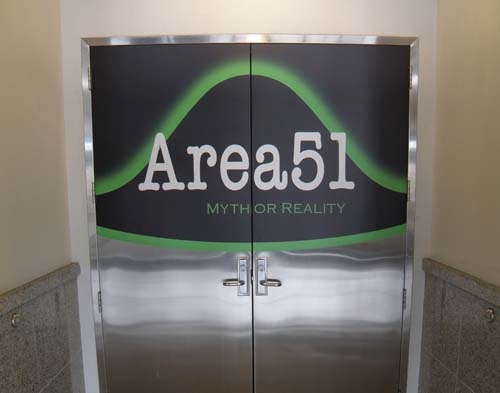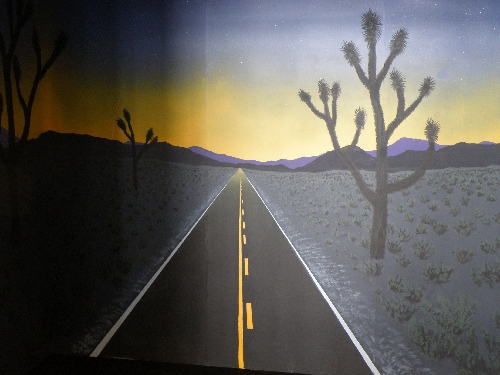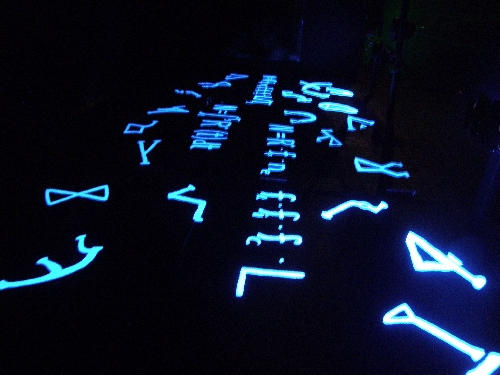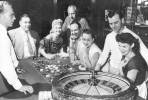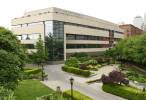Atomic Testing Museum explores Area 51
Most newspaper stories about museum exhibits tell you what you can expect to see.
Yeah, this isn't going to be one of those.
That's because "Area 51: Myth or Reality," which opens Monday at the National Atomic Testing Museum, will, by design, carry almost as much mystique as its subject. If you knew all about it in advance, it would ruin the fun.
"We want it to be more of an experience than an exhibit," said Allan Palmer, museum executive director and chief executive officer. "It's both fun and a little spooky at the same time."
Despite the order of the words in its title, "Myth or Reality" will focus on much of the latter, almost in reply to the former.
"This exhibit is about the real parts of Area 51 that we can now talk about," Palmer said. "A lot of this was declassified by the CIA and the Department of Defense, through the Air Force, about two or three years ago. For the first time, we can talk about a lot of what happened out there up until about 1968 or the early '70s.
"Part of it is the fascinating true story about what happened at Area 51."
Which, for the most part, remains shrouded in mystery and rumor. But it included, Palmer said, mainly the development of nuclear weapons, the Stealth bomber, the high-altitude A-12 spy plane and a lot of spying on the Soviets during the Cold War, "which was really, really a touchy thing." The work had to be kept secret, he said, and "the more you do that, the more people want to fill in the blanks."
T.D. Barnes of Las Vegas sees some humor in that. Barnes, who did an interview for the "Myth or Reality" exhibit, worked at Area 51 for about five years as a radar specialist, "among other things." He's heard all the stories: Are there aliens out there? Alien autopsies? Some sort of supernatural portal to another universe?
"It's kind of amusing," Barnes said, "because for the first 30 years they" -- that would be the public, the media and any other outsiders -- "didn't even know we existed."
"I think what's brought on a lot of the stories is they were surprised the base existed for three decades and nobody knew about it," Barnes said. " 'What in the world could they be doing out there?' Their imaginations ran wild because they didn't have any information. They stretched it a bit, trying to make it fit what they wanted to believe."
For all those years, Barnes said, he, and the workers who came before and after, were attempting to toil in obscurity. They'd fly out to Area 51 on Mondays and return on Fridays. Most of the workers, he said, couldn't even live in the area, so as not to draw attention to the project.
"Originally, everybody had to live out of state except the CIA guards, the communications people and our group of 23 people," Barnes said.
Palmer said that even beyond the imagination-filling-in-the-gaps-of-knowledge factor, it's understandable that rumors ran rampant. Among the research being conducted, he said, was examination of Russian aircraft and development of highly advanced technology.
"You'd fly in there, and there's a Russian MiG -- wow," said Palmer, who did just that when he was in the Navy. When the Stealth technology was developed, its borderline-creepy bat-wing design looked very much like an unidentified flying object.
"Were some of those mistaken for UFOs?" he said. "Certainly they were. But they couldn't talk about it at the time."
Barnes, who said very little of the work at Area 51 has been declassified, thinks that part of the mystique came about because it took so long for such advanced technology to be developed.
"We were inventing everything -- fuels, everything about the planes," he said. "Now they crank it out and put it to work and you know about it right away."
Palmer said the exhibit will, in a sense, put the visitor in Barnes' shoes, while working in plenty of the myth aspect.
"When people first walk in, it's going to be like you arrive as a new employee at Area 51," he said. "You're the recruit who's going to walk through the doors when the light goes on. You'll be greeted by somebody who's going to say, 'Here's what you're going to be doing,' " whether that's a pilot flying an A-12 or even an alien.
Then visitors will encounter the Extra-Terrestrial Highway -- or at least a painting of it.
"The highway takes you down a path where you are going to be exposed to sights and sounds, some of which you recognize, some of which you don't," Palmer said. "There's a lot of ambiguity in this whole exhibit. Something you might see looking around a corner that looks like an alien might not be. Or vice versa."
And the exhibit will cover some of the myth that, well, might not be myth. Among the displays is one of glyphs taken from areas around Southern Nevada.
"Some of them, if you look really hard at it, might look like they were from other places," Palmer said. "There are some things that they're just going to have to come to conclusions themselves. That's kind of the whole process -- you want people to think about all those things that are known and unknown at the same time. This is a really different kind of museum exhibit. Something like this has not been done in any other museum."
So, if only a little bit of it has been declassified, does that mean that there really were aliens eating in the canteen at Area 51?
"No," Barnes said.
And then, after a beat: "We wish."
"Most of them," Palmer said, "will tell you it was kind of exciting at times, but a lot of their work was repetitive and mundane. If there had been alien spacecraft, I'm sure it would've been much more exciting."
Contact reporter Heidi Knapp Rinella at hrinella@reviewjournal.com or 702-383-0474.
PREVIEW
What: "Area 51: Myth or Realty"
When: Opening 10 a.m.-5 p.m. Monday and continuing for 18 months; 10 a.m.-5 p.m. Mondays through Saturdays, noon-5 p.m. Sundays
Where: National Atomic Testing Museum, 755 E. Flamingo Road
Admission: $14 for most adults; $11 for Nevada residents with ID, seniors 62 and older, military with ID, students with ID and kids ages 7-17; free for children 6 and younger (702-794-5124 or NationalAtomicTesting Museum.org)



